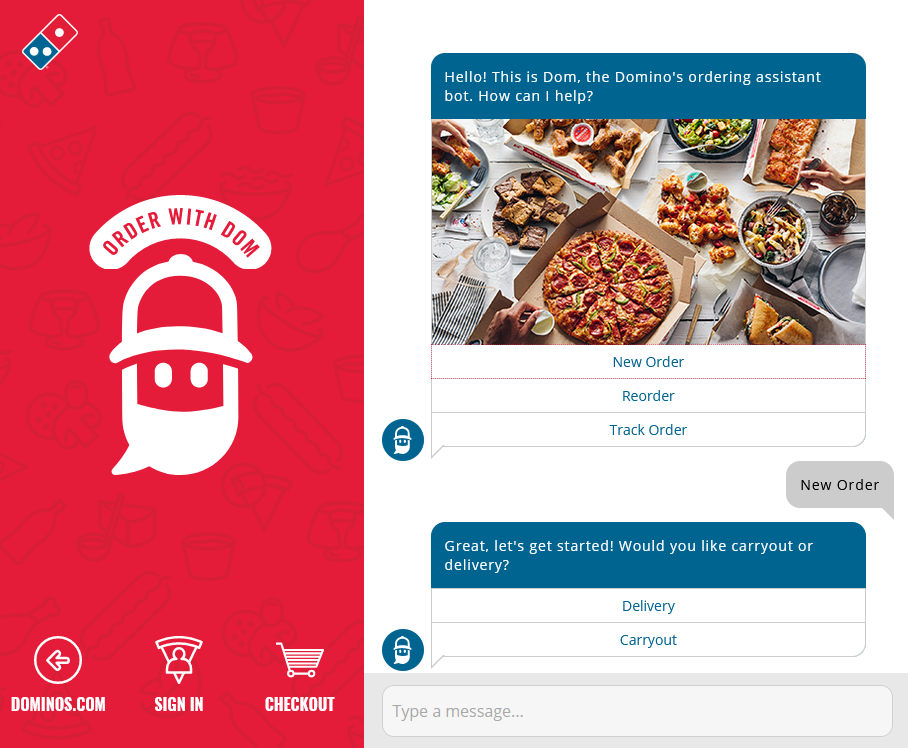Virtual agents are a digital interface for people to interact with information. Virtual agents appear, most commonly, through a chat-based user interface (UI). They are digital replications of a guide at a museum, a librarian, or a help desk agent, for example, and often add personality to the company brand.
In terms of usefulness, virtual agents are less capable than an actual person, but more capable than a simple website. A single well-programmed virtual agent offers:
- Zero delay for users (No more waiting for the next available representative)
- Quick on-demand access to information (without reading through lots of web pages)
In this article, we’ll take a look at virtual agents, including:
Common use cases for virtual agents
Virtual agents can be used to play host to any number of conversations from tour guide to doctor visits. The most common use cases, though, are in a company’s customer service or IT support/help desk departments.
For customer service, virtual agents can:
- Answer company questions
- Provide links to customer inquiries
- Get information from a customer about a purchase issue
For IT, virtual agents can:
- Help guide people through an issue they are having
- Create a ticket for what is going wrong and send it to the right IT team to tackle the issue
- Prioritize issues to help IT know which is most important to tackle first
In both use cases, customers and the business benefit. Virtual agents give customers quicker access to information because they don’t have to wait for an available representative. The company also doesn’t have to hire and maintain a large call center to take people’s requests.
Virtual agents add value
Virtual agents don’t just speed up requests and point to the right information. The best designed virtual agents can add value in their own right, particularly when it comes to:
- Data-driven decisions
- Acceptance of non-linear information
The great thing about virtual agents? Their ability to allow a company to make data-driven decisions with regard to the conversation it hosts. Companies have collected data in the past through human reporting and audio recording, but the information has been limited in quantity and due to human error.
Virtual agents, while possibly primitive at first, have the ability to give data without human error—and they can provide lots more data.
Domino’s was a company quick to adopt virtual agents and AI, where virtual agents provided an excellent way to use AI. Ordering a pizza checks the box on a few key principles that state if a virtual agent is good to use:
- Clear customer intent
- A fixed number of parameters to fill the order
- The order in which information is taken does not matter
First, people reach out to Domino’s most often to order a pizza. That is the customer’s intent.
Pizzas also have only a small set of parameters that need to be known by Domino’s—the information to collect. They need to know:
- What kind of pizza
- What toppings
- What size of pizza
- Delivery options
And, finally, it doesn’t matter in which order this information is given by the customer—it will all need to be known at some point.
Sure, an online form makes it possibly to gather all this information, but it requires that data in the same linear form, all at once. On the other hand, a virtual agent can accept the information in a non-linear way.
From a user experience (UX) perspective, it is great when an agent can accept non-linear information. The idea is that thoughts arrive to people at different times.
- For one person, the kind of pizza might be the most pressing thing on their mind when they are ordering and will be the first thing they wish to say.
- For another, the delivery time might be the most pressing thing and the first thing they wish to say.
While neither are necessarily the most important to processing the pizza order, a virtual agent that can accept non-linear information allows people to exist where they are at in time without insisting the person adopts the same linear sequence the form pushes forth.
Virtual agent best practices
Finally, good Virtual Agents rely on good design. Period.
A virtual agent with a bad design will only be cumbersome, frustrating, and prohibitive to user adoption. A successful virtual agent relies on actually performing in a way that improves on the status quo, or the tradeoff is at least equal to the status quo.
Design elements for a good virtual agent are:
- The agent is easily accessible (such as on the website’s homepage).
- The conversation responds well to user inputs.
- The agent gives relevant information.
- Conversational paths resolve at clear endings.
(Learn more about this topic, known as conversational UX.)
Virtual agents are applied AI
Virtual agents are an application in which artificial intelligence can be used—but is not AI itself.
Virtual agents are strictly a medium, one that communicates information between a company and a user. To relate it to a person, a virtual agent is the mouth, not the brain.
The virtual agent is an apparatus that can guide a user through an experience, presenting information on-demand, providing links, asking clarifying questions, and reporting the information to another party who might be better-suited to help.
For a virtual agent to operate well, likely some form of AI will be used in its backend. Virtual agents are often dealing with text inputs through a chat, and maybe photos, so the computer can see what is going on.
Natural language processing (NLP) techniques will classify a piece of text into a number of user intents and can guide the user through a series of auto-generated responses. (Often, it’s the use of AI and NLP that separates virtual agents from chatbots.)
People may apply additional AI techniques in a virtual agent so it operates more fluidly and gives it “personality”.
In the Domino’s example, AI is used in the user’s initial text to categorize the message into one of a number of intents:
- Create an order
- Check business hours
- Inquire about an existing order
- File an issue
After the text gets categorized, the virtual agent can then follow either a hard-coded path or an AI, non-linear path to begin a conversation around the intent and getting the customer what they want.
Customers & businesses value virtual agents
Virtual agents are a great way to give your customer an enjoyable user experience and allow them to be more engaged with the service your company offers. A company can collect more data, add another element to its brand, and take care of its customers in another way.
Virtual agents have become a common thing for companies to want in their service. So, most of the big cloud services offer special tools to start building them.








